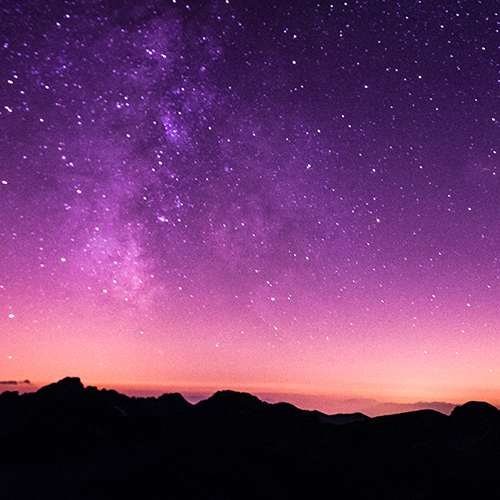
It was a dark and rainy December night in Seattle, in the midst of finals week at the University of Washington. The campus was noticeably quieter than usual as students completed exams and faculty feverishly graded papers. But on this dark December evening, over 800 people flocked to Kane Hall, eager to learn more about an innovator who paired art and science in ways never before experienced: Leonardo DaVinci.
To commemorate the life of DaVinci and put the “Renaissance Man” in a modern context, the University of Washington invited Domenico Laurenza, author and scholar on Leonardo DaVinci, to deliver a keynote lecture. Laurenza’s work focuses on the Codescope, a translation of one of DaVinci’s original notebooks, known as the Codex Leicester. In his work, Laurenza explains elements of the Codex and demonstrates how DaVinci uses observation through art and science to inform his findings.
Fascination with Leonardo

The year 2019 marked 500 years since Leonardo DaVinci’s death. Worldwide festivals, stories and events honored “the master” and his work. However, fascination with “Leonardo” (as many refer to DaVinci) goes far beyond an anniversary, according to Laurenza.
“We live in such a specialized world,” said Lorenza. “For many, Leonardo represents a kind of ‘paradise lost,’ where art and science were connected and the study of the world was integrated.”
According to Laurenza, the desire to cross disciplines and work together is having a resurgence. DaVinci, who used observation inspired by nature to explain and illustrate systems and processes, is an inspiration for much of this interdisciplinary work.
“There are emerging systems that we cannot yet replicate in engineering,” said Kristi Morgansen, professor in aeronautics and astronautics, who participated in the DaVinci event. “That’s where we can look to nature for inspiration.”
The University as the Nexus
Tom Daniel, UW professor of biology, led the initiative to host a Leonardo DaVinci event on campus and bring Laurenza to Seattle. According to Daniel, DaVinci’s interdisciplinary approach to studying the world is perfectly matched to the structure of the modern research university.
Daniel’s desire to host an event on campus drew the attention of UW President Ana Mari Cauce, who kicked off the December lecture by welcoming Laurenza to campus.
“Intellectual curiosity can flourish when it’s done without barriers,” said Cauce. “A great public university cultivates knowledge and encourages innovative thinking and research.”

Stuart Lingo, associate professor and chair in Art History, agrees. “A university has become a place where we still have a long experimental process, and Leonardo is a representative of that culture,” said Lingo. “Renaissance investigators represent a pre-history of the way we investigate at a modern university – where the firewalls between areas are coming down.”
An Event and Exhibition
While Laurenza’s lecture highlighted the findings of Leonardo, the UW provided the perfect backdrop to put DaVinci’s work and influence in context. In preparing for Laurenza’s visit, Daniel and Lingo considered ways to engage the UW community. The result: a public exhibition of research and work related to or inspired by DaVinci, presented by faculty and students prior to Laurenza’s lecture.
Topics and demonstrations at the pre-lecture exhibition included bioinspired aircraft wings, holographic displays for pilots, robotic insects and artistic forms that provide inspiration.
Researchers from the Burke Museum used bird and bat wings to illustrate how DaVinci explored natural structures to explain the physics of flight. Katie Stanchak, a PhD student in the Department of Biology and researcher at the Burke, showed schoolchildren the wing of a parrot from the Solomon Islands to demonstrate the principle of lift.
“Through our demonstrations we’re drawing attention to the bioinspirations of DaVinci and how they relate to and inspire us as scientists today,” said Stanchak.

Demonstrations carried a common theme of interdisciplinarity, as students and faculty from departments across campus showcased work done together. “The inspiration of Leonardo can bring you past roadblocks by integrating aspects of science and beyond,” said Mahad Ahmed, a post bac student in Daniel’s lab. “Our lab has a mix of people in engineering, science and mathematics.”
Seattle as the Modern Florence?
What draws scholars like Laurenza to Seattle is the city’s direct connection to the Codex Leicester itself. In 1994 Bill Gates purchased the Codex and had sections of it digitized. Along with a team of scholars, researchers and developers, Gates created an interactive version of the Codescope that translates DaVinci’s famed mirror script into English and allows users to hover over and focus on the original drawings. The interactive version – not typically available to the public – was on display for visitors at the UW during the pre-lecture exhibition.
While the original copy of the Codex travels to cities around the world, Seattle’s fascination with DaVinci’s original work remains, and inspires scholars and DaVinci fans alike.
Daniel often quotes a line from Eric Weiner’s book The Geography of Bliss, which offers a humorous take on why certain locations around the world experience happiness and prosperity. “…Over the centuries the world has witnessed a handful of Golden ages. Places and times of immense creativity and human flourishment. Fifth century Athens, Elizabethan London, Renaissance Florence, late 20th century Seattle.”

If Weiner’s assessment is true, Daniel and his colleagues may be at the center of the place and moment that carries on DaVinci’s legacy.
More Stories

What the Sky Teaches Us
Brittany Kamai, an astrophysicist with knowledge of Pacific Islanders' Indigenous navigation using the sky, is teaching a new UW course, Pacific Indigenous Astrophysics.

Two Majors, Complementary Skills
Elizabeth Xiong (2024), a double major in art history and computer science, shares how she gained different and complementary skills from each major.

A Closer Look at Teens & Digital Technology
The impact of digital technology on teens' mental health is the focus of a new course developed by Lucia Magis-Weinberg in the UW Department of Psychology.